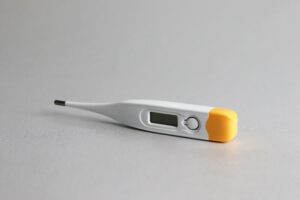Breast Cancer Staging


- If you are diagnosed with breast cancer, you will find your doctors use a universal breast cancer staging system.
- This cancer staging system uses TNM letters with numbers
- The universal breast cancer staging system helps determine the best treatment for each individual case.
Following a breast cancer diagnosis, it is very important for your doctor to determine precisely where the cancer is located, how much it has grown, what is the sign, and if/where it has spread to. With the majority of solid tumours, including those found in the breast, there is a universal staging system that can be implemented to optimize the best treatment approach and determine prognosis on a case-by-case basis.
How the TNM Cancer Staging System Works
T: Tumour size, measured in mm.
T0 – No evidence of primary tumour.
Tis – Carcinoma in situ. Cancer is only found in the ducts of the breast tissue.
T1 – Tumour is 20mm or smaller.
T2 – Tumour is larger than 20mm but smaller than 50mm.
T3 – Tumour is larger than 50mm.
T4 – Tumour has grown into the chest wall or the skin of the breast tissue AND/OR inflammatory breast cancer is detected.
N: Lymph node involvement.
N0 – No cancer detected in the lymph nodes OR cancer cells found that are less than 0.2mm.
N1 – Cancer has spread to 1-3 axillary lymph nodes.
N2 – Cancer has spread to 4-9 axillary lymph nodes OR to internal mammary lymph nodes.
N3 – Cancer has spread to 10 or more axillary lymph nodes OR to lymph nodes above or below the collarbone AND/OR to internal mammary lymph nodes.
M: Metastasis; whether cancer has spread to other parts of the body.
M0 – No metastasis.
M1 – Breast cancer cells growing in other organs of the body.
Breast Cancer Stages
Stage 0: Cancer is only present in the ducts of the breast tissue, no evidence of cancer cells in the neighboring breast tissue. Defined as non-invasive ductal carcinoma in situ.
Tis N0 M0
Stage IA: Tumour is 20mm or smaller and cancer has not spread outside the breast.
T1, N0, M0
Stage IB: No tumour in the breast, but small groups of cancer cells in the lymph nodes (0.2-2mm).
T0, N1, M0
OR
Tumour smaller than 20mm in breast and small groups of cancer cells in the lymph nodes (0.2-2mm).
T1, N1, M0
Stage IIA: No tumour in the breast, but cancer cells (larger than 2mm) found in 1-3 axillary nodes or in the lymph nodes near the breast bone.
T0, N1, M0
OR
Tumour is 20mm or smaller and cancer cells have spread to axillary lymph nodes.
T1, N1, M0
OR
Tumour is larger than 20mm and smaller than 50mm and cancer cells have not spread to axillary lymph nodes.
T2, N0, M0
Stage IIB: Tumour is larger than 20mm and smaller than 50mm and there are small groups of cancer cells in the lymph nodes (0.2-2mm).
T2, N1, M0
OR
Tumour is larger than 20mm and smaller than 50mm and cancer cells have spread to 1-3 axillary lymph nodes or to lymph nodes near the breast bone.
T2, N1, M0
OR
Tumour is larger than 50mm. Cancer cells have not spread to lymph nodes.
T3, N0, M0
Stage IIIA: Tumour of any size and cancer cells have spread to 4-9 axillary lymph nodes, but not to the rest of the body.
T0/T1/T2/T3, N2, M0
OR
Tumour is larger than 50mm and cancer cells have spread to 1-3 axillary lymph nodes or to lymph nodes near the breast bone.
T3, N1, M0
Stage IIIB: Tumour of any size and cancer cells have spread to the chest wall and/or the skin of the breast, causing swelling or ulceration.
AND
Cancer cells may be present in up to 9 axillary lymph nodes or in the lymph nodes near the breast bone.
T4, N0/N1/N2, M0 Stage IIIB breast cancer can also be inflammatory. This is when there is reddening of the breast skin and the breast feels warm or swollen to the touch.
Stage IIIC: Tumour of any size, may have spread to the chest wall and/or the skin of the breast
AND
Cancer cells are found in 10 or more axillary lymph nodes and/or in the lymph nodes above and below the collarbone and/or in the lymph nodes near the breast bone.
T0/T1/T2/T3, N3, M0
Stage IV (metastatic): Tumour of any size. Cancer cells have spread to other organs, such as the brain, the liver, the bones, the lungs, and distant lymph nodes. De novo stage IV breast cancer occurs when cancer has already metastasised upon diagnosis. This is rare. Usually, metastasis occurs following the recurrence of previous disease.
T0/T1/T2/T3, N0/N1/N2/N3, M1
Additional classification of breast cancer
In 2018 the guidelines for the staging of breast cancer changed to incorporate cancer characteristics into the TNM system. This means tumour cells are graded by:
- Appearance – how different from normal cells they look.
- Oestrogen and progesterone receptor status.
- HER2 status – whether there is overexpression/amplification of the HER2 receptor.
Doctors may also use a measure of proliferation to investigate how quickly the cells are replicating and what pill use increase your breast cancer risk.
Adding the results of these tests to the TNM system can affect how a patient’s disease is staged. For example, those who have the triple-negative disease (oestrogen receptor-negative, progesterone receptor-negative, and HER2 negative) typically have a worse prognosis than those who are not triple-negative. Thus, they may be graded more severely than they would be by following the TNM system in isolation.
These additional classifications do add further complexity to the staging of the disease (breast cancer staging), but they also make the diagnosis more accurate and allow for a more personalised, optimal treatment regimen to be instigated.
Nabta is reshaping women’s healthcare. We support women with their personal health journeys, from everyday wellbeing to the uniquely female experiences of fertility, pregnancy, and menopause.
Get in touch if you have any questions about this article or any aspect of women’s health. We’re here for you and you can also download our app for support wherever you are.
Sources:
“Breast Cancer – Stages.” Cancer.Net, 26 Aug. 2019, https://www.cancer.net/cancer-types/breast-cancer/stages.
“Breast Cancer Stages: 0 Through IV.” Breastcancer.org, 23 July 2019, https://www.breastcancer.org/symptoms/diagnosis/staging.
Hortobagyi, Gabriel N., et al. “New and Important Changes in the TNM Staging System for Breast Cancer.” American Society of Clinical Oncology Educational Book, no. 38, 23 May 2018, pp. 457–467., doi:10.1200/edbk_201313.
Li, Xiaoxian, et al. “Triple-Negative Breast Cancer Has Worse Overall Survival and Cause-Specific Survival than Non-Triple-Negative Breast Cancer.” Breast Cancer Research and Treatment, vol. 161, no. 2, Jan. 2017, pp. 279–287., doi:10.1007/s10549-016-4059-6.













































